Abstract
A novel method for measuring the kinetics of a subgroup of organisms growing in mixed culture was used to measure the kinetics of propionate-using organisms in a mixed-population anaerobic digester. It was shown that there are at least two subgroups of propionate-using organisms with distinctly different growth kinetics. Both subgroups could grow without reducing sulfate. The slower-growing subgroup had a Ks of 11 mg/liter and a mumax of 0.0054 h-1 which is similar to the mumax reported for Syntrophobacter wolinii. The faster-growing group had a mumax of 0.050 h-1 and a Ks of 330 mg/liter. The slower-growing group was inhibited by a pH shock from 7.0 to 6.0, whereas the faster-growing group was less sensitive to the pH shock.
Full text
PDF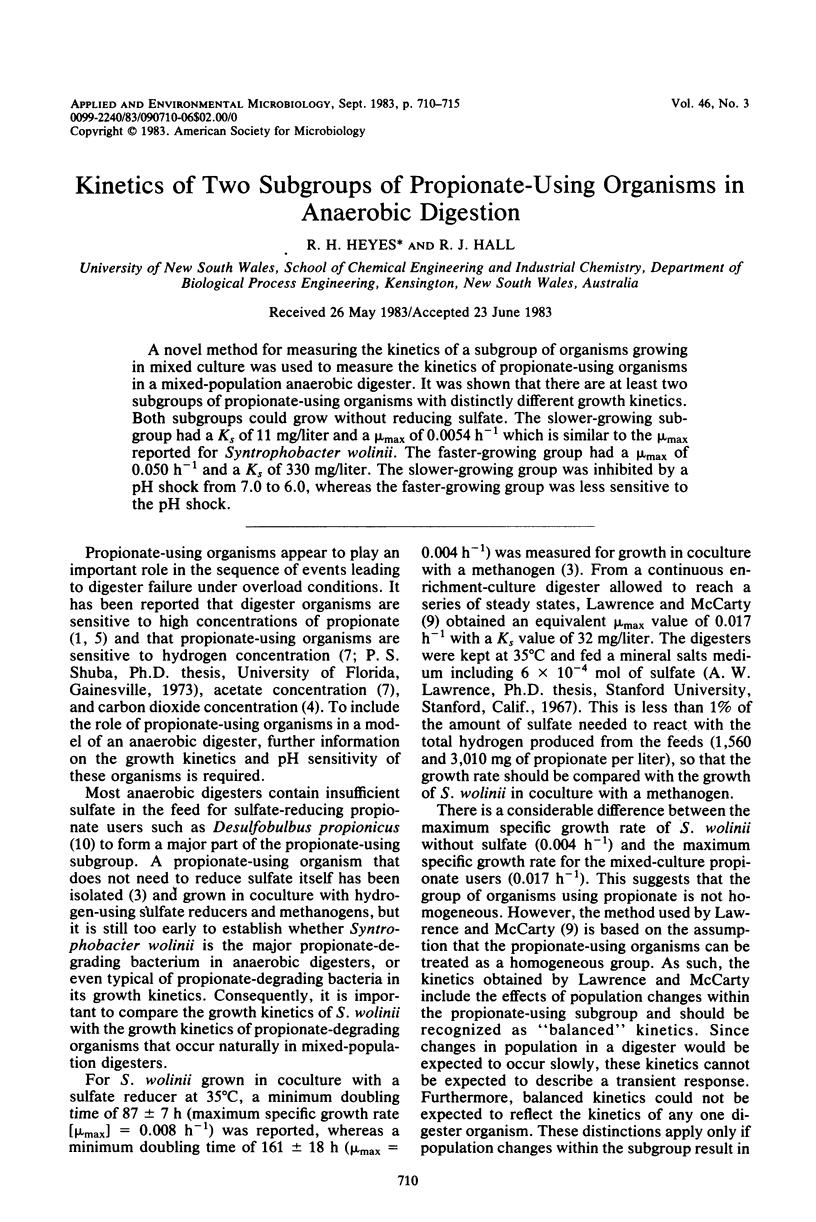
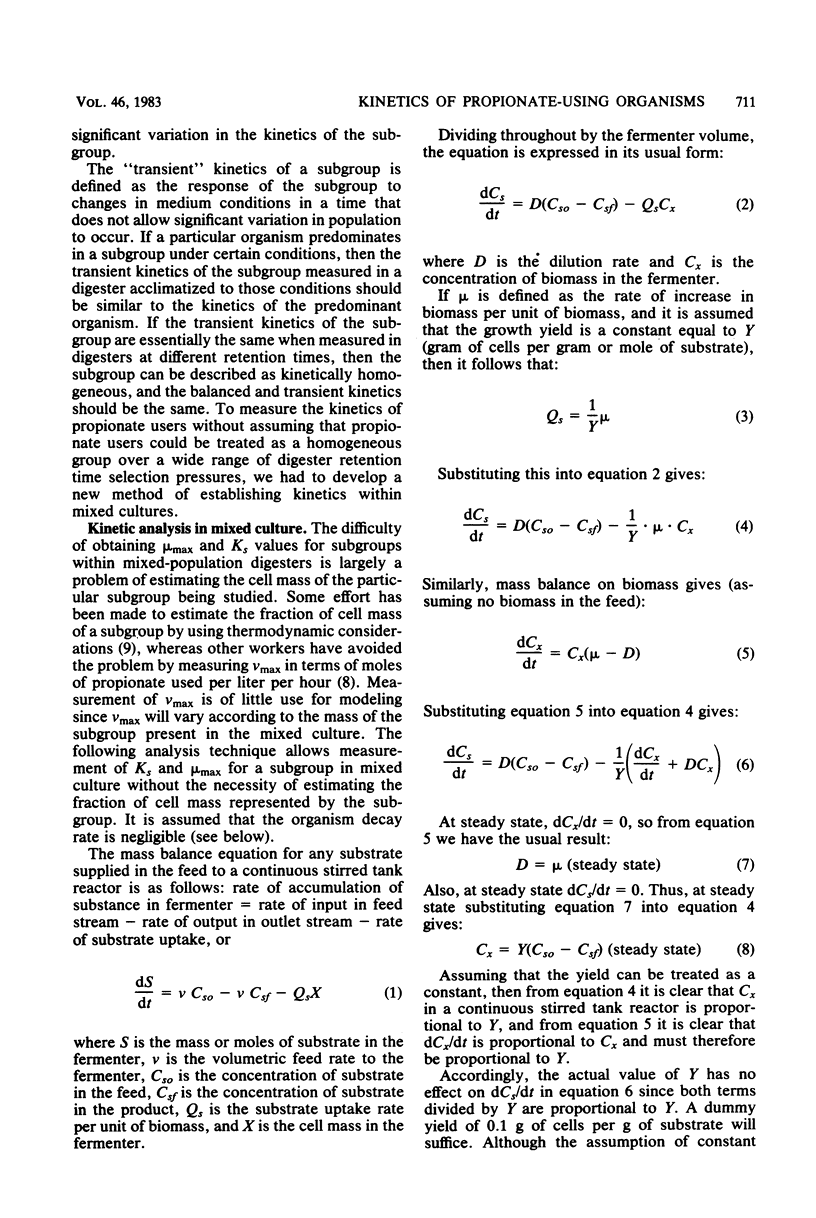
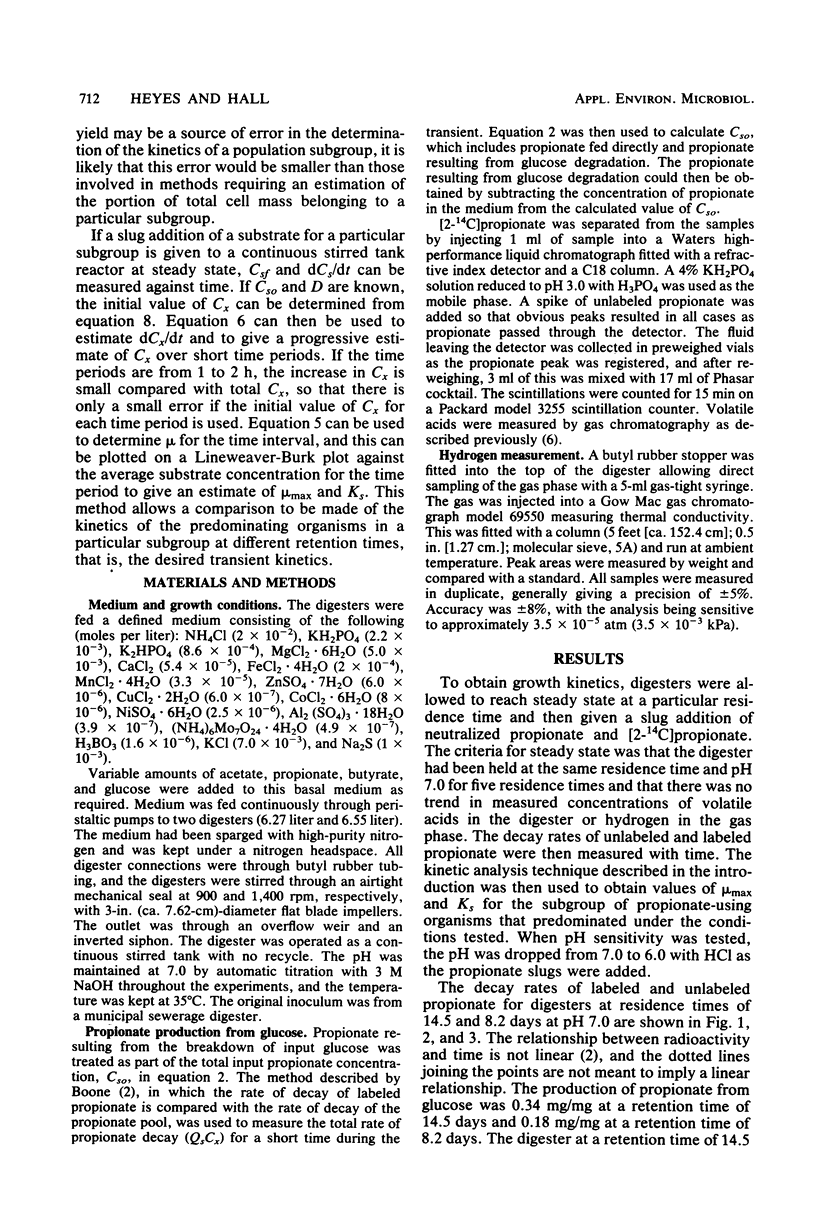
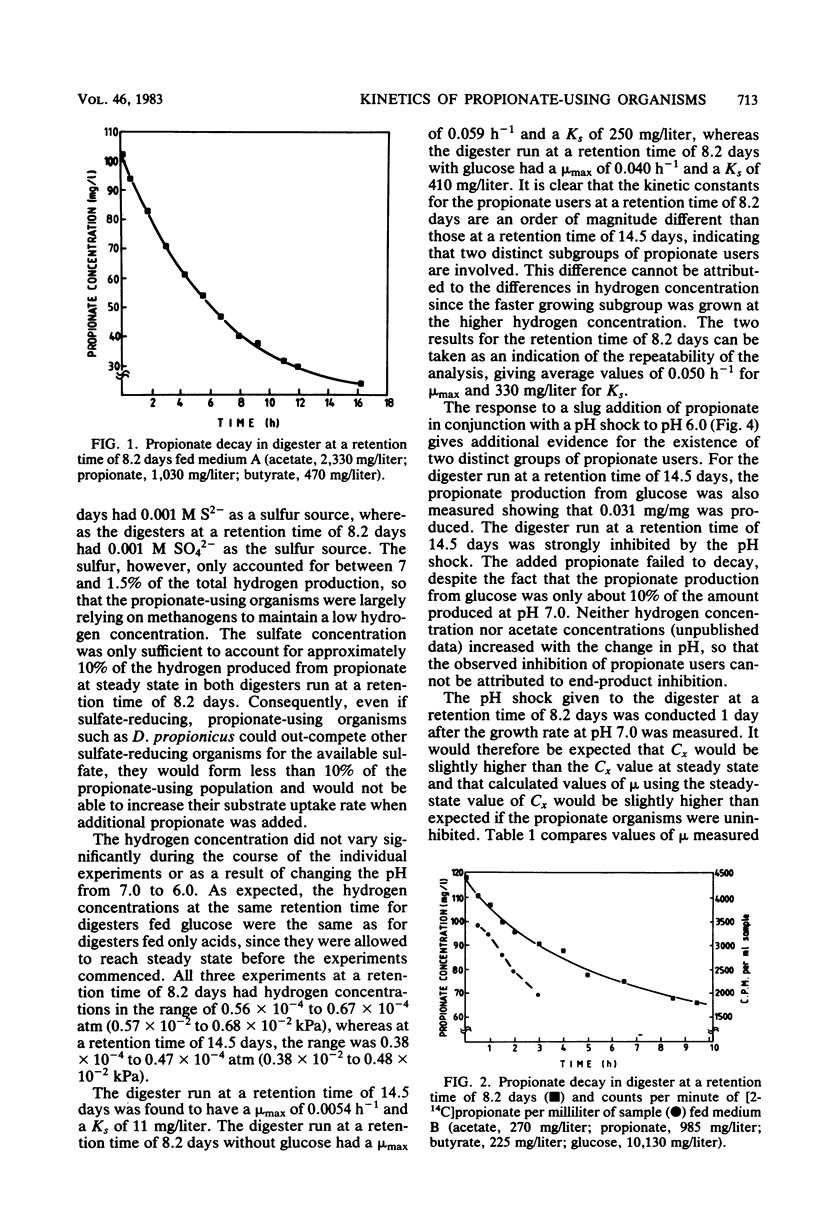
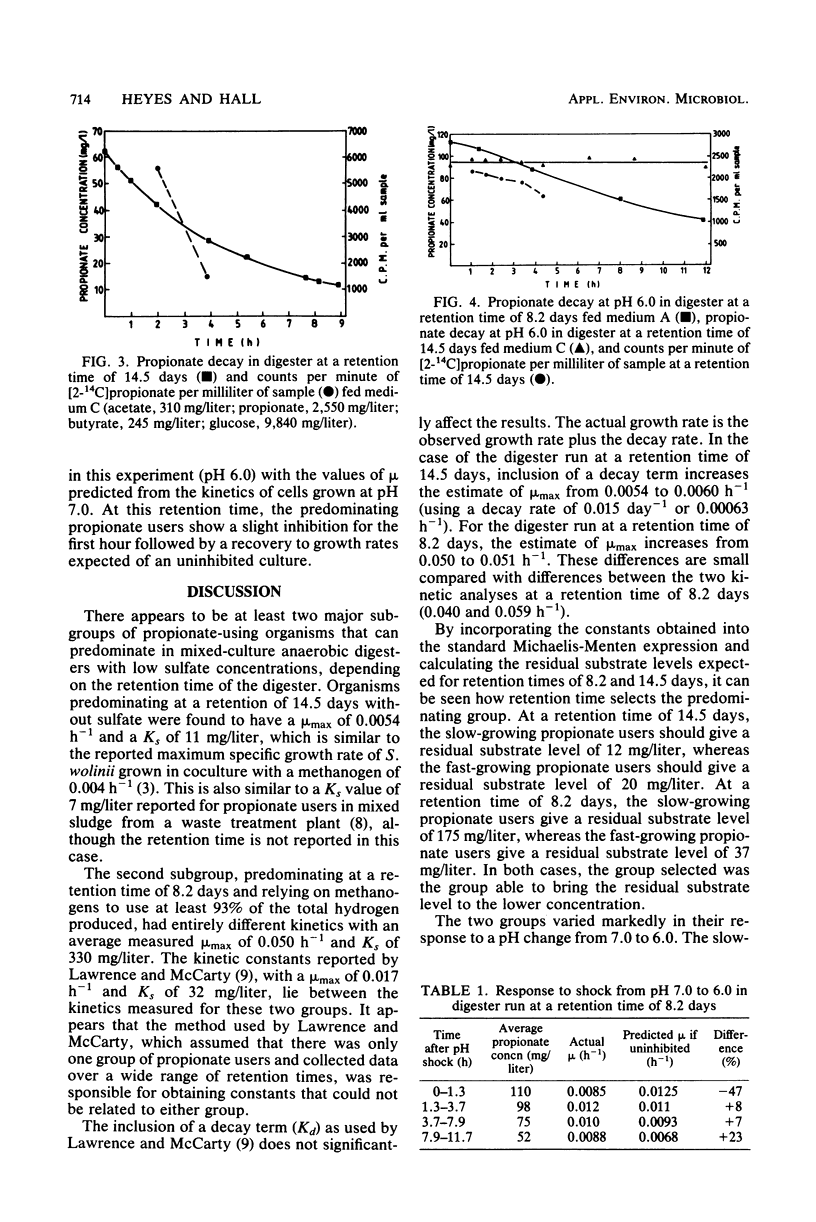
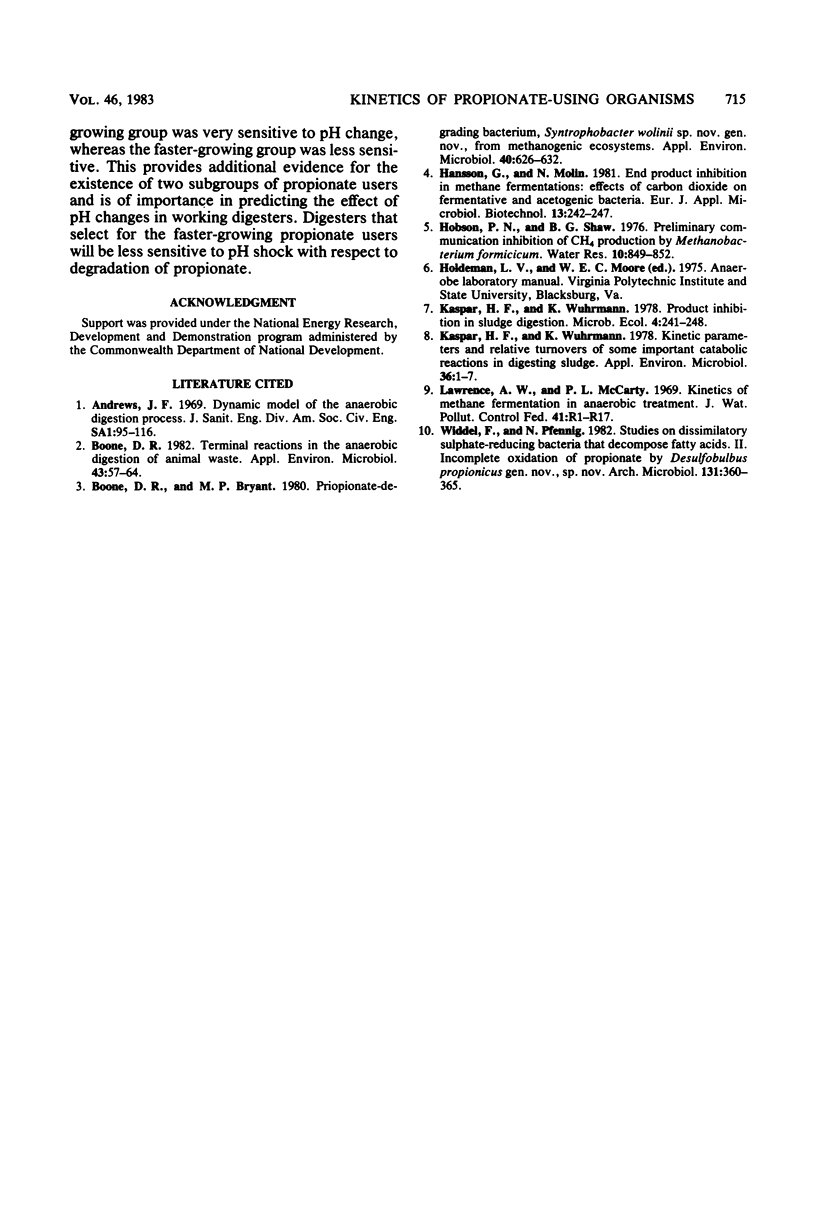
Selected References
These references are in PubMed. This may not be the complete list of references from this article.
- Boone D. R., Bryant M. P. Propionate-Degrading Bacterium, Syntrophobacter wolinii sp. nov. gen. nov., from Methanogenic Ecosystems. Appl Environ Microbiol. 1980 Sep;40(3):626–632. doi: 10.1128/aem.40.3.626-632.1980. [DOI] [PMC free article] [PubMed] [Google Scholar]
- Boone D. R. Terminal reactions in the anaerobic digestion of animal waste. Appl Environ Microbiol. 1982 Jan;43(1):57–64. doi: 10.1128/aem.43.1.57-64.1982. [DOI] [PMC free article] [PubMed] [Google Scholar]
- Kaspar H. F., Wuhrmann K. Kinetic parameters and relative turnovers of some important catabolic reactions in digesting sludge. Appl Environ Microbiol. 1978 Jul;36(1):1–7. doi: 10.1128/aem.36.1.1-7.1978. [DOI] [PMC free article] [PubMed] [Google Scholar]


